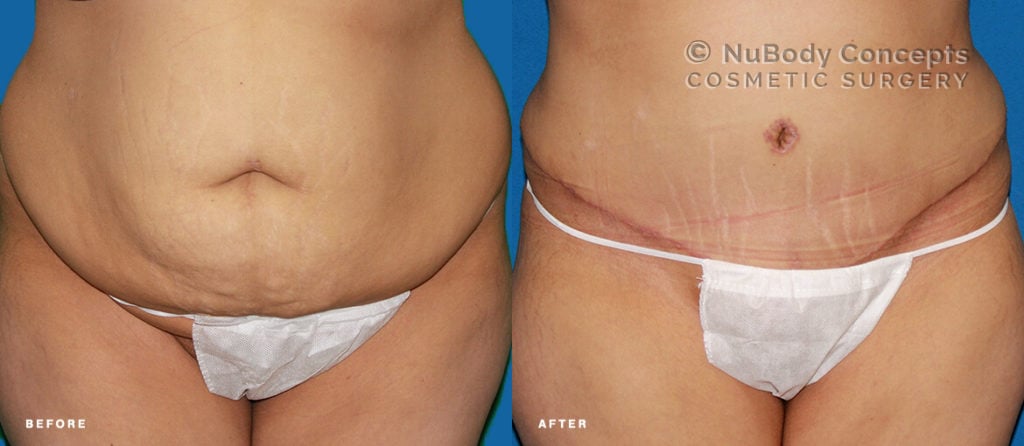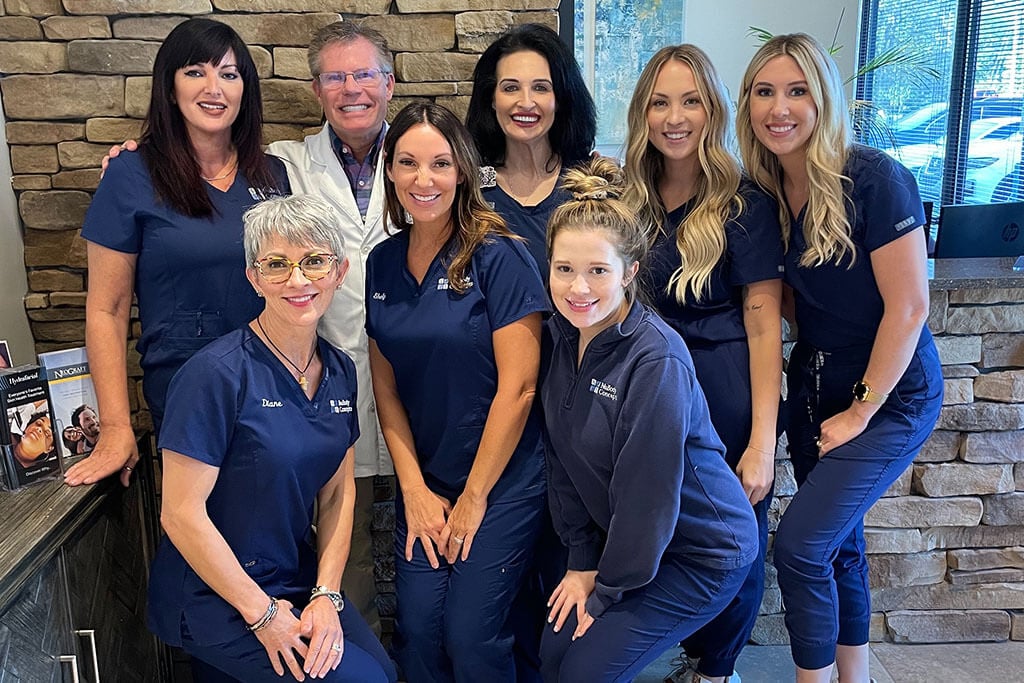Tummy tucks are among the top three most popular procedures among our patients at NuBody Concepts Cosmetic Surgery in Nashville and Memphis, TN. And if you worry about what happens to your belly button after a tummy tuck, you are not alone. Even most plastic surgeons agree that belly button reconstruction is an important, if not the most important, part of a tummy tuck.
Today we will explain everything you should know about belly button design.
What to Know About Your Belly Button After a Tummy Tuck
The Aesthetics of Your Belly Button
You may remember comparing your belly button to those of your siblings or friends when you were a child. If you had an “outie,” you probably spent way too much time wishing for a prettier belly button – that perfectly round depression, not too shallow and not too deep, slightly more horizontal than vertical.
Or maybe you already had a perfectly nice belly button until pregnancy changed that entire landscape drastically. As your midsection expands, whether as a result of pregnancy and childbirth or another form of weight gain, your belly button also changes its appearance. Instead of round and tight it can become undefined or even shift its location. If you have a lot of excess skin, your belly button may be enlarged. It might be elongated and look more like a slit. Or it might be entirely invisible because the surrounding skin covers it up.
Since this usually happens gradually over time, we tend to forget that it doesn’t have to be this way. This is where a tummy tuck comes into play!
If I have a tummy tuck, what happens with my belly button?


A Tummy Tuck Needs a Well-Designed Belly Button
A tummy tuck is an excellent choice to remove excess skin and fat from your abdomen. While liposuction is less invasive, it can only tighten flabby skin so far. Patients who have undergone pregnancy or substantial weight loss or whose skin has lost its elasticity due to aging cannot attain an entirely flat stomach with liposuction alone. Only a tummy tuck can achieve that.
But you might ask: If I have a tummy tuck, what will happen to my belly button?
What Happens to the Belly Button During a Tummy Tuck
During tummy tuck surgery, a plastic surgeon removes – via excision – the patient’s excess fat and skin. Depending on the type of tummy tuck you’re having, he or she may also repair the abdominal muscle if it is torn or split (a common occurrence after pregnancy and childbirth called diastasis recti). As you might imagine, this will result in things moving around quite a bit, meaning your belly button will likely not end up in a natural-looking location unless it is reconstructed.
Luckily, experienced plastic surgeons know exactly what to do. And even better, there are many ways you can design a belly button – now may be the time for you to get your wish of a perfect one!
How Belly Button Reconstruction Works
Choosing a Plastic Surgeon for Your New Belly Button
While plastic surgery has its foundation in the medical science, it is often as much art as science. A good plastic surgeon has an eye for aesthetics, for what is pleasing to the eye, for the right proportions. Our navel may only be a small part of our bodies, but its location and shape are crucial for our overall look.
Belly button reconstruction – also known as an umbilicoplasty – can be performed standalone but is most often incorporated into tummy tuck surgery or even as part of a complete Mommy Makeover.
“Now may be the time for you to get your wish of a perfect belly button!”
Double-board certified plastic surgeon Dr. John Rosdeutscher of NuBody Concepts Cosmetic Surgery
A good plastic surgeon knows that a tummy tuck accomplishes more than just a flat tummy.
Planning Your Belly Button Design and Reconstruction
You may have heard of a “designer belly button.” To perform a tummy tuck for the sole purpose of getting yourself a nicer belly button would be an overkill, so the term is a bit misleading. But it’s certainly a good idea to discuss preferred placement and shape of your belly button with your plastic surgeon during your pre-surgery consultation.
It’s a good idea to bring in pictures of particular belly buttons you like. It may sound strange, but it will help your surgeon better understand your aesthetic goals. If you help your hairdresser understand which hairstyle you prefer by bringing in sample pictures, why not do the same when meeting with your plastic surgeon to discuss your tummy tuck and belly button placement?
Moving the Belly Button During Tummy Tuck Surgery
During a tummy tuck, your plastic surgeon makes a small incision around the belly button, leaving it attached to the abdominal wall underneath. He can now pull the released skin tight and remove any underlying fat. Once the stomach is completely flat with tightened skin, the surgeon repositions the belly button to the most aesthetically pleasing location and reattaches it to the skin. The good news: Given its nature, it’s not very hard to hide a scar inside a belly button, so there is no need to worry about scarring!
However, while it’s easy to hide the resulting stitches under the folds of the belly button, shaping and positioning it correctly requires the touch of a skilled plastic surgeon.
If you only have a small amount of loose skin, your belly button may already look close to normal. In that case, your surgeon may opt to simply remove some layers of fat without the need to repair any muscles or reposition the belly button. This is also referred to as a “mini tummy tuck.” Mini tummy tucks typically can be accomplished with a smaller scar than a full tummy tuck.
If you are unhappy with excess tummy flab, it may be time for a tummy tuck and get yourself a new belly button in the process. Your first step is to contact a plastic surgeon and schedule a personal consultation.
With NuBody Concepts, you can achieve the body you’ve always desired. Check out our Tummy Tuck before and after photos to see proof of our work, or schedule a consultation today to learn how NuBody Concepts can help you achieve stunning Tummy Tuck results.

The NuBody Concepts Cosmetic Surgery & MedSpa team would like to thank our patients for choosing our surgical, skincare, and weight-loss services at our Tennessee practices in Nashville and Memphis. With your continued support and reader participation, we were again named the #1 plastic surgeon in the Best of Music City, Best of Williamson, and Memphis Most awards for 2024, adding to our multiple consecutive awards since 2020. Thank you!












